Zhigang Ma
Strategies for Searching Video Content with Text Queries or Video Examples
Jun 17, 2016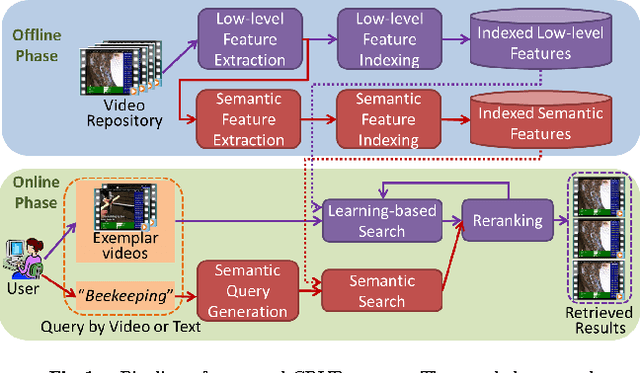
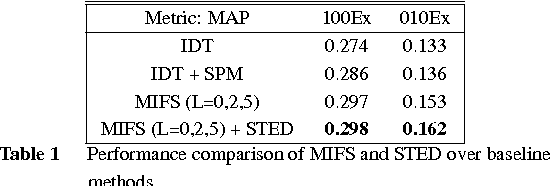
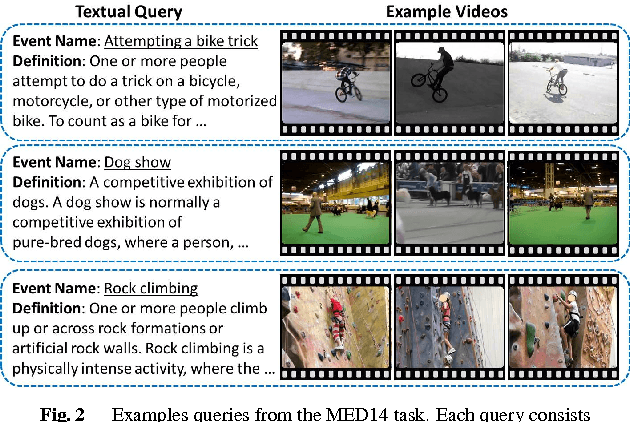

Abstract:The large number of user-generated videos uploaded on to the Internet everyday has led to many commercial video search engines, which mainly rely on text metadata for search. However, metadata is often lacking for user-generated videos, thus these videos are unsearchable by current search engines. Therefore, content-based video retrieval (CBVR) tackles this metadata-scarcity problem by directly analyzing the visual and audio streams of each video. CBVR encompasses multiple research topics, including low-level feature design, feature fusion, semantic detector training and video search/reranking. We present novel strategies in these topics to enhance CBVR in both accuracy and speed under different query inputs, including pure textual queries and query by video examples. Our proposed strategies have been incorporated into our submission for the TRECVID 2014 Multimedia Event Detection evaluation, where our system outperformed other submissions in both text queries and video example queries, thus demonstrating the effectiveness of our proposed approaches.
A Convex Formulation for Spectral Shrunk Clustering
Nov 23, 2014
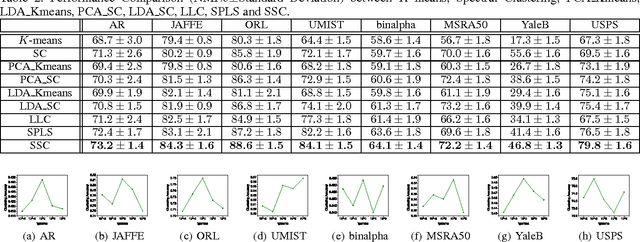

Abstract:Spectral clustering is a fundamental technique in the field of data mining and information processing. Most existing spectral clustering algorithms integrate dimensionality reduction into the clustering process assisted by manifold learning in the original space. However, the manifold in reduced-dimensional subspace is likely to exhibit altered properties in contrast with the original space. Thus, applying manifold information obtained from the original space to the clustering process in a low-dimensional subspace is prone to inferior performance. Aiming to address this issue, we propose a novel convex algorithm that mines the manifold structure in the low-dimensional subspace. In addition, our unified learning process makes the manifold learning particularly tailored for the clustering. Compared with other related methods, the proposed algorithm results in more structured clustering result. To validate the efficacy of the proposed algorithm, we perform extensive experiments on several benchmark datasets in comparison with some state-of-the-art clustering approaches. The experimental results demonstrate that the proposed algorithm has quite promising clustering performance.
Balanced k-Means and Min-Cut Clustering
Nov 23, 2014
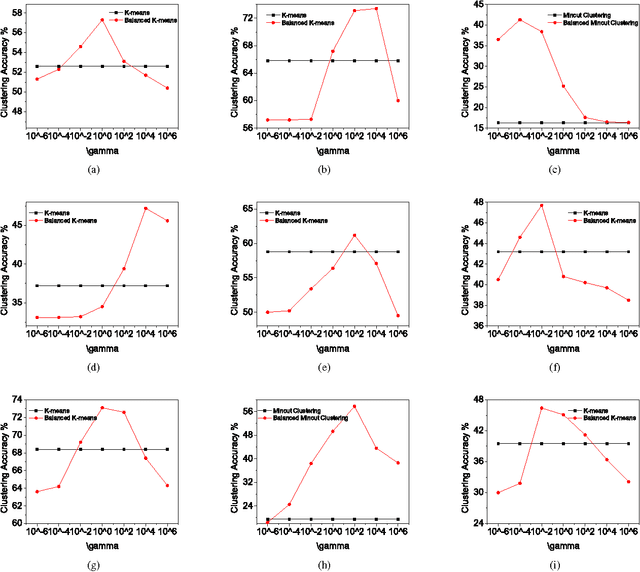
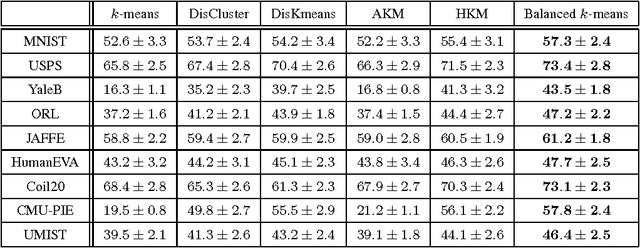
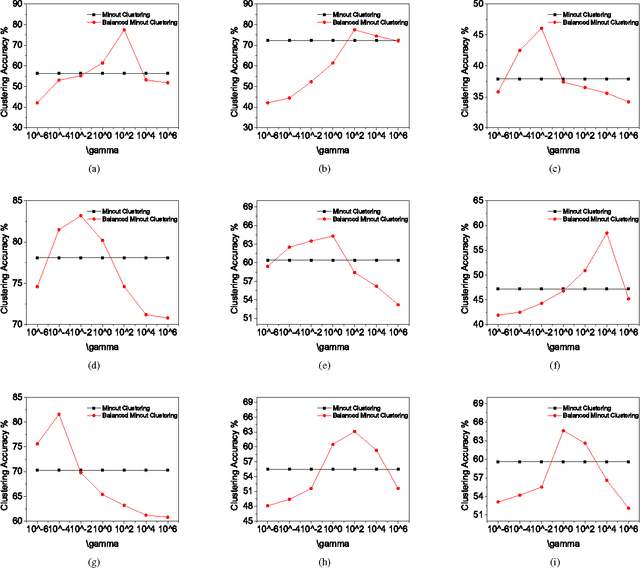
Abstract:Clustering is an effective technique in data mining to generate groups that are the matter of interest. Among various clustering approaches, the family of k-means algorithms and min-cut algorithms gain most popularity due to their simplicity and efficacy. The classical k-means algorithm partitions a number of data points into several subsets by iteratively updating the clustering centers and the associated data points. By contrast, a weighted undirected graph is constructed in min-cut algorithms which partition the vertices of the graph into two sets. However, existing clustering algorithms tend to cluster minority of data points into a subset, which shall be avoided when the target dataset is balanced. To achieve more accurate clustering for balanced dataset, we propose to leverage exclusive lasso on k-means and min-cut to regulate the balance degree of the clustering results. By optimizing our objective functions that build atop the exclusive lasso, we can make the clustering result as much balanced as possible. Extensive experiments on several large-scale datasets validate the advantage of the proposed algorithms compared to the state-of-the-art clustering algorithms.
 Add to Chrome
Add to Chrome Add to Firefox
Add to Firefox Add to Edge
Add to Edge